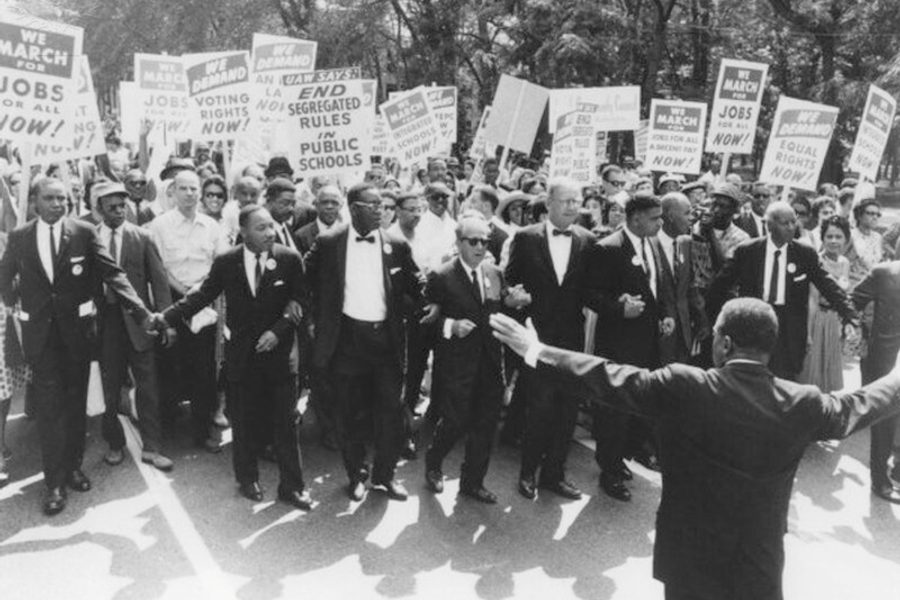Donald Trump’s Election Means We Need a Third Reconstruction in America
Even in this dark moment, we must see our potential for prophetic resistance.
Rev. Dr. William J. Barber II

This piece first appeared at BillMoyers.com.
The reactionary wave that swept across America with the election of Donald Trump is not an anomaly in our history. It is an all-too-familiar pattern in the long struggle for American reconstruction.
The story of our struggle for freedom is not linear: Every advance toward a more perfect union has been met with a backlash of resistance.
When African-Americans became full citizens of the United States during Reconstruction, a violent backlash arose in the Redemption movement that included both the violence of the Klan and the voter suppression of Southern Democrats. The same kind of backlash followed the legislative victories of the civil rights movement — what many historians call a “Second Reconstruction.” Richard Nixon’s “law and order” campaign of 1968 was an intentional effort to appeal to racial hate and fear without using overtly racist language. His adviser, Kevin Phillips, called it the “Southern Strategy.”
Donald Trump’s unanticipated victory could not have been possible without the election of Barack Obama as America’s first African-American president. Trump entered national politics by waging a crusade against the possibility of Obama’s citizenship. It proved to be the perfect way to touch the psychic wound of so many Americans who have not faced our legacy of racism. Anyone familiar with the Mississippi Plan of 1876 or the Southern Strategy of 1968 can be surprised only by the ease with which Trump adapted them for the 21st century.
Trump’s attacks on immigrants, Muslims and the LGBTQ community were political ploys based on the fundamental racial fear at the heart of the American experience. When he told white Americans that he was their last chance to make America great again, he was touching a wound passed down since the lost cause religion of the 19th century.
America must not waste time asking ourselves how this could have happened. It happened because it is a habit written deep in our public memory. If we are willing to see ourselves as we are and have been, we will also see our potential for prophetic resistance, even in times like these.
For we are also the heirs of great dissenters who’ve stood for right even when they were a minority of one. When the Jim Crow laws of the solid South were upheld by the US Supreme Court in the case of Plessy v. Ferguson, only one justice — John Harlan of Kentucky — dissented. But his dissenting opinion laid the legal groundwork upon which Thurgood Marshall built his case over half a century later in Brown v. Board of Education.
When Woodrow Wilson showed Birth of a Nation at the White House a century ago, W.E.B. DuBois, Ida B. Wells and the interracial NAACP challenged the most powerful man in America to face his racism. When three civil rights workers were brutally murdered in the first days of Freedom Summer, black and white students chose to press on together, challenging Mississippi’s brutal racism.
Less than a majority of Americans elected a mortal, not a god, when they cast their ballots for Donald Trump. They did not un-elect the foundational principles of our Constitution, nor have they overwhelmed the moral convictions of our faith.
Across lines of division, we can continue to build the moral coalition that is already a majority in this country. We can and must face the race and class question together and not as separate issues.
Yes, we have some difficult days ahead. But our foreparents were up against more with less. And they taught us that a dying mule always kicks the hardest. Our work continues: we must work together for a Third Reconstruction in America.




